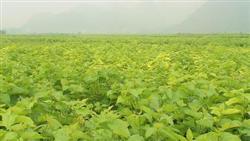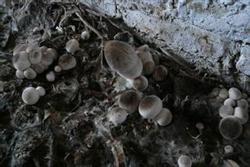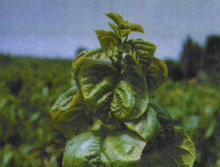Mulberry cultivation techniques

Mulberry is a perennial woody plant, is a long-lived tree species, naturally growing mulberry has the longest life span of more than a thousand years. The cultivated mulberry is affected by artificial cutting and long-term leaf harvesting, and its life is much shorter, but its full-growing period is more than 10 years. First, the establishment of a new mulberry orchard (1) to select sites with deep, loose and fertile soil, far away from pollution, requiring irrigation and drainage, preferably paddy fields, and scattered mountains, slopes, beaches, and so on, mulberry trees can be planted. (2) preparation before transplanting 1. Ploughing the soil deeply to promote the oxidation of the heart soil and enhance the ventilation and water permeability. 2. Apply sufficient base fertilizer and require fully mature pig and cow manure and soil miscellaneous fertilizer 20m / 30 as base fertilizer, combined with deep ploughing to bury organic fertilizer deep in the soil. 3. soil preparation and excavation of drainage and irrigation ditches. The requirement of soil preparation is fine, and the surface of the box is smooth without weeds. The width of the whole compartment is 1.3 mi 1.6 meters, and the depth of the ditch is 20 mi 30 cm. The drainage and irrigation ditch and the cross trench in the middle of the field are excavated around the field, which is 10 centimeters deeper than the box trench. (3) planting 1. Planting period. Generally, it is better to plant in winter and early spring, and the soil temperature is required to be stable at about 10 ℃ 12 min. 2. Seedling selection and treatment. Strong seedlings of improved varieties of mulberry should be selected without diseases and insect pests. When planting mulberry in summer and autumn, the roots of mulberry seedlings should not be hurt as much as possible, and the roots of mulberry seedlings should be preserved; when planting mulberry in winter and spring, the overlong main roots should be trimmed slightly to make the lateral roots more frequent. Before planting, the roots should be dipped in mud mixed with phosphate fertilizer, which is conducive to root survival. 3. Planting density. Guangxi mulberry garden is suitable for close planting and rapid growth, and it is suitable for hybrid mulberry varieties to plant 5000 trees per mu, with a general row spacing of 65 li 80 cm and a plant spacing of 12 mi 18 cm. 4. Planting method. The mulberry seedling root is buried in the mulberry line soil, the cover soil is gently lifted to make the root stretch, and then a layer of loose soil is stepped on. The mulberry seedling is required to pass through the rhizome 3 cm, drench and fix the root water, and the plant is cut within 2 days after planting. The height of the remaining plant is 10ml and 20cm, and the tip is cut off to reach a unified height. (4) Management after planting. 1. Coverage. Cover the ground or mulberry rows with straw and weeds to preserve water and prevent drought, reduce plant water loss, restrain weeds, prevent soil consolidation and fertilize the soil. 2. drench water in time to prevent drought and eliminate stagnant water. Keeping proper soil moisture is the key to the survival and growth of new mulberry. The soil is drenched in time when it is dry and drained when it is rainy. 3. Loosen the soil and weed. After a certain period of time, especially after rain, the soil is easy to harden, combined with weeding to loosen the soil, which is conducive to the growth of mulberry roots. 4. Fertilization. After sprouting and opening leaves of new mulberry, dung water or urea water and fertilizer were applied once. After that, according to the growth of new mulberry, topdressing fertilizer was applied for 1 / 2 times. The amount of fertilizer applied is 10 kg urea per mu or 10 kg compound fertilizer per mu. The amount of fertilizer applied each time in the small tree stage should not be too much, and should eat less and eat more. 5. Replanting deficient plants. The lack of plant in mulberry garden will affect the yield, so it should be replanted in time. When planting mulberry, some preparatory plants or dense planting places should be left to produce some plants to fill the gap. At the same time, strengthen management to promote its growth to keep up. 2. Mulberry garden management and mulberry leaf harvest (1) fertilization in mulberry garden can not only make mulberry leaves have a high yield, but also improve the quality of mulberry leaves to ensure a good harvest of cocoons and obtain high-quality silkworm eggs. For mulberry gardens with low soil fertility, for every 100 kg mulberry leaves, 1.9 kg of pure nitrogen, 1.0 kg of pure phosphorus and 1.013 kg of pure potassium should be applied. 1. Fertilizer types: mainly include manure, cake fertilizer, soil manure, compost, pond mud, green manure and other organic fertilizers; compound fertilizers, urea, calcium superphosphate, potassium chloride, potassium sulfate, plant ash, lime and other inorganic fertilizers as well as trace element fertilizers. 2. Fertilization method (1) organic fertilizer. Manure, cake fertilizer and so on are generally ripened and then applied to the mulberry garden. It is generally applied after winter felling, and can also be used after summer felling and other periods. A large amount of soil mixed fertilizer and green manure can also be spread between the rows. The effect of dung fertilizer in the germination stage is faster. (2) compound fertilizer, urea, calcium superphosphate and organic compound fertilizer can also be used as base fertilizer. (3) Fertilizer application method of mulberry production and fertilizer: when mulberry sprouts, 15 kg urea is applied per mu, and then chemical fertilizer is applied once within 3 days after stepping on leaves, 15 kg urea, 10 kg calcium superphosphate or 25 kg compound fertilizer per mu. Urea 10 kg plus compound fertilizer 12 kg or dung water 30 kg 40 kg can also be used. (4) applying fertilizer twice in the whole year. When the amount of fertilizer applied in the whole year is combined with the second deep trench in spring and summer, the amount in the first half of the year accounts for 60%, and that in the second half accounts for 40%. Cover the soil with weeds or green manure after compaction. (5) foliar fertilization. Foliar fertilizers such as potassium dihydrogen phosphate, Yemanbao and Spengshibao have a certain effect on increasing mulberry leaves or improving leaf quality. foliar fertilizers are generally used more than 15 days before silkworm rearing in mulberry production. (2) mulberry ploughing and weeding mulberry ploughing and winter drying in mid-December. Weeding once in spring, summer and autumn, combined with weeding in tillage and row. (3) the water content of mulberry leaves for irrigation and drainage is generally 70%, which is less than 70%. Mulberry leaves are affected when they are less than 50%. Flood irrigation, furrow irrigation, sprinkler irrigation and watering can be used for irrigation. Soil moisture should not be too much, the land is low-lying in the rainy season, and the groundwater level is higher, so stagnant water should be excluded at this time. (4) reasonable cutting form of mulberry can reduce flowers and fruits, promote vegetative growth, renew branches to adjust ventilation and transparent environment, promote exuberant growth of new shoots, reduce diseases and insect pests, and increase leaf yield and leaf quality. 1. Summer felling. The method of root cutting is generally used in summer cutting. That is, cutting the aboveground part on flat land, this cutting method is suitable for picking leaves and is easy to manage. But there are more silt leaves in the head. 2. Winter felling. Generally adopt the way of cutting with Qi fist (leave the height of the main pole 30ml 50cm). Fist branches are formed because each cutting is in the same place. Qiquan shearing is to cut the branches flat at the base of the branches of the fist tree. In this way, the number of branches is more and the yield is more stable. Third, the current leading variety in Guangxi (1) Guisangyou 62 is a mulberry hybrid combination (variety) bred by Guangxi sericulture extension Station. Features: early germination, late dormancy of deciduous leaves in late autumn, long growth period, many effective branches, fast growth rate of branches and leaves, large leaves, high leaf yield, up to 4000 kg mulberry leaves per mu. (2) Guisangyou 12 is also a new hybrid variety bred by Guangxi sericulture extension Station. Features: neat population, vigorous growth, fast long leaves, dense internodes, early germination, late defoliation, strong drought resistance, strong regeneration, multiple cutting in a year, large and thick leaves, thick green leaves, mulberry leaves per mu up to 3927 kg.
- Prev

Several keys to high and stable yield of cultivated volvariella volvacea
Straw mushroom likes the environment of high temperature and high humidity. After the culture material enters the mushroom, it is necessary to strictly control its water content, put an end to the use of over-age bacteria, and keep the temperature of the mushroom room at about 30 ℃. Second, because straw mushroom is an aerobic fungus, need a lot of water, too much ventilation is easy to die of lack of water, lack of ventilation is easy to cause too much carbon dioxide and hypoxia.
- Next

Prevention and Control of Diseases and insect pests of Mulberry after Summer cutting
Mulberry dwarf disease is a disease of mulberry trees. It can be divided into three types: yellowing, atrophy and mosaic. First, morbid ① yellowing atrophy: the first onset starts from the top of the branches, and the leaves are small and yellow and curl to the back. With the aggravation of the disease, the lower lobe is thin and small, yellowed and curled with focal spots. The branches are dense and the lateral branches are clustered in the shape of sweeping.
Related
- Fuxing push coffee new agricultural production and marketing class: lack of small-scale processing plants
- Jujube rice field leisure farm deep ploughing Yilan for five years to create a space for organic food and play
- Nongyu Farm-A trial of organic papaya for brave women with advanced technology
- Four points for attention in the prevention and control of diseases and insect pests of edible fungi
- How to add nutrient solution to Edible Fungi
- Is there any good way to control edible fungus mites?
- Open Inoculation Technology of Edible Fungi
- Is there any clever way to use fertilizer for edible fungus in winter?
- What agents are used to kill the pathogens of edible fungi in the mushroom shed?
- Rapid drying of Edible Fungi

